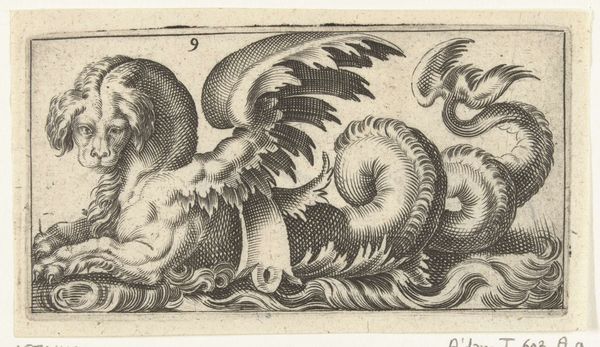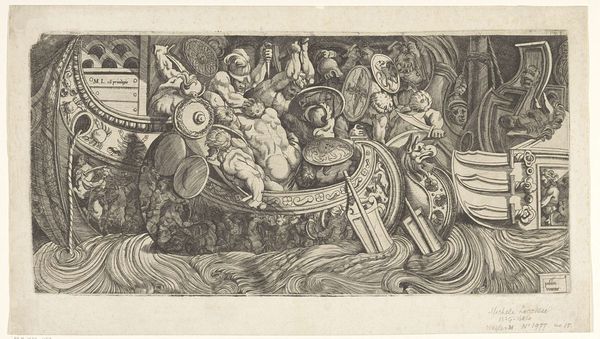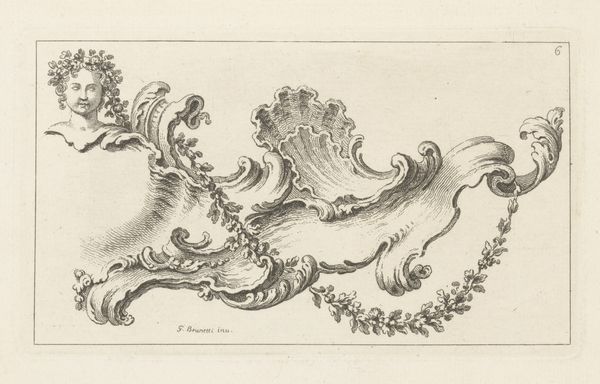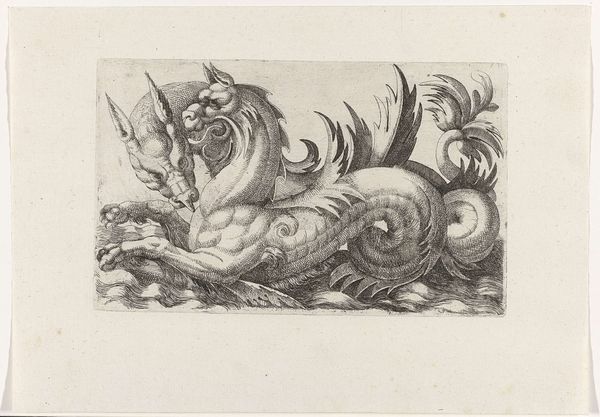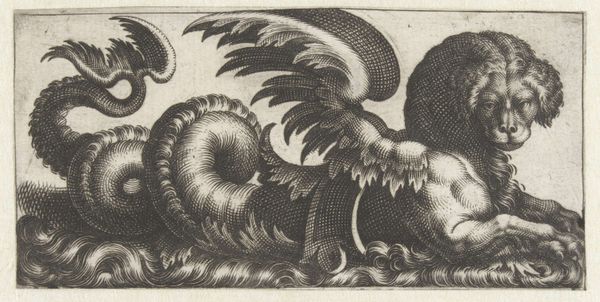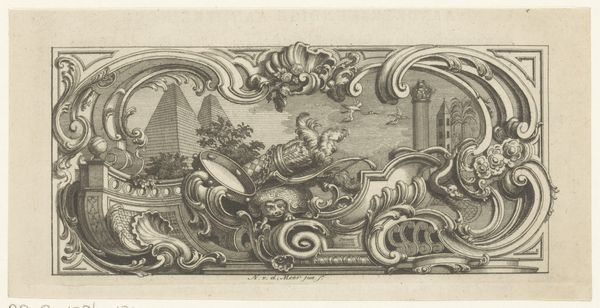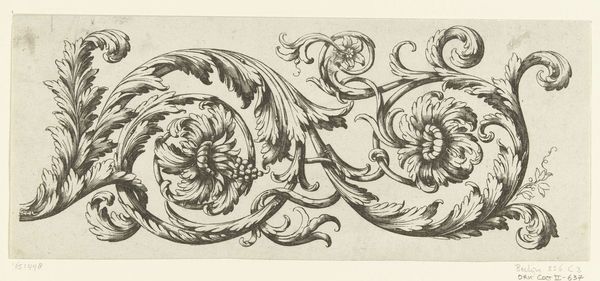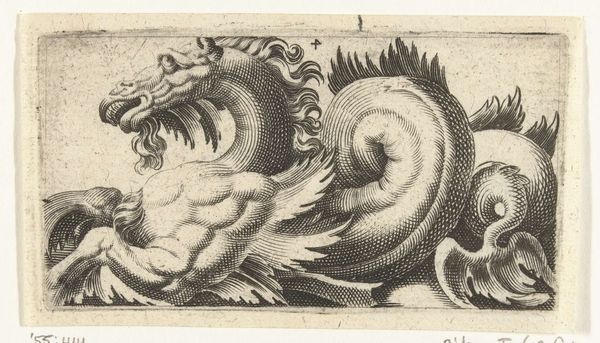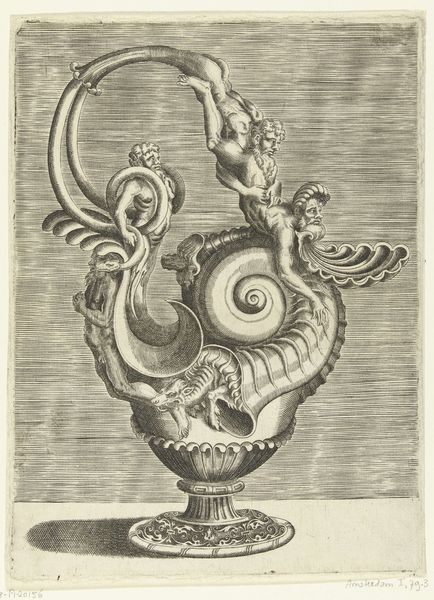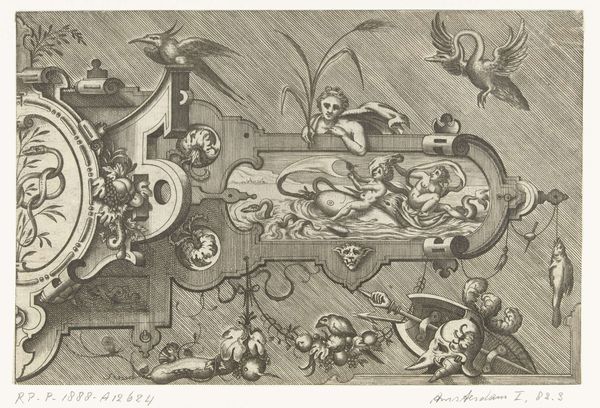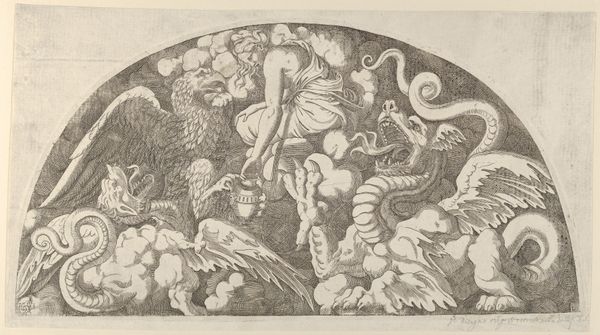
Dimensions: height 131 mm, width 303 mm
Copyright: Rijks Museum: Open Domain
Curator: Look at this detailed engraving, “Fries met wapentrofee,” or “Frieze with Trophy of Arms,” dating back to about 1550. It’s currently held here at the Rijksmuseum. Editor: It has such a dramatic, almost theatrical quality. I'm struck by how dense the composition is, all these weapons and armour crammed together. It feels intentionally overwhelming. Curator: Indeed, these assembled arms and armour are designed to impress. Trophies of arms such as these became a popular motif across Europe, especially adorning buildings as symbols of military prowess and prestige. They communicated power. Editor: Absolutely. It’s also interesting to think about the labour involved. Engravings like this were carefully produced. And what kind of patronage would be required to disseminate this type of propaganda during the Renaissance. How would the original context determine how these symbols are consumed. Curator: It is not currently known who the engraving's author is, but what is communicated to us today is a strong sense of that specific era’s aristocratic ideals. Also remember that printed images played an increasingly important role in disseminating ideas, designs, and styles during the Renaissance. It fed the widespread interest in classical antiquity. Editor: You're right, the classical references are really palpable here. But looking at this makes me think, were these symbolic arms real objects? Were they used in warfare? Is this essentially documentation or is this about creating aspirational status for its viewers? Curator: Good questions. I suspect it's both. Certainly many of the objects would have been drawn from real life, perhaps from the armoury of a wealthy patron, while others might have been fanciful embellishments for the sake of visual impact and symbolic value. Editor: I can almost feel the weight of these helmets and shields. What kind of inks would they use to realize the texture. Thinking about it now, it does make me wonder if the artist also worked with metal, in an applied artisan capacity to generate income. Curator: What intrigues me is how this artwork operates as a historical marker. The frieze format evokes classical precedents, while the armaments reflect the realities of warfare and status displays in the 16th century. Editor: And what a lasting statement about conflict, craft, and the layered creation of meaning! It gives me much to ponder.
Comments
No comments
Be the first to comment and join the conversation on the ultimate creative platform.
